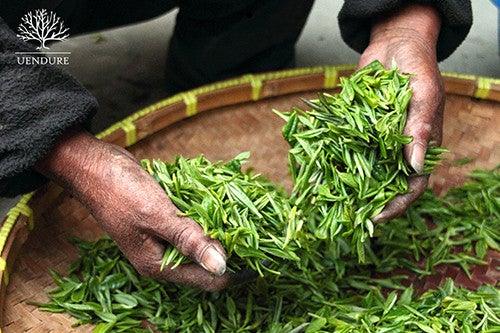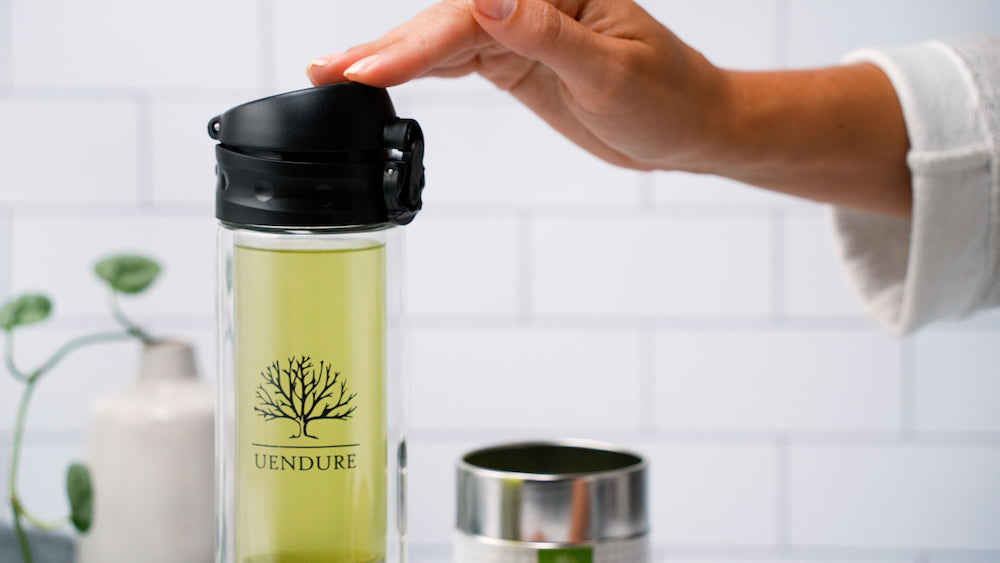Save 15% when you buy the Original Bottle Bundle!

Japanese or Chinese Green Tea?
Everyone has heard that green tea promotes wellness and calms the mind. Some even say it aids in weight loss and appetite suppression. No matter what you're using it for, green tea is a good restorative drink. It doesn’t hurt that it tastes smooth, fresh, and slightly sweet.

Differences
What is not so well known is that there are thousands of varieties of green tea grown in different countries. It was originally grown in China and brought to Japan by Buddhists monks. Now these two countries produce the bulk of green tea sold throughout the world.
The two countries produce very different strains of green tea. Japanese tea tastes of fresh grass with a hint of the ocean in it. It is slightly sweet, with a subtle bitterness, and it is typically bright green. Chinese green tea is more earthy and smoky which puts it more on the bitter side.
Their tastes may be affected by their very different preparations. In China, tea is made by hand using different recipes and different preparations. This produces thousands of different flavors, and qualities, of green tea. Japanese green tea is normally harvested by machine using one type of leaf called sencha. UEndure's tea is grown on terrain to steep for machine. Our tea is harvested with hand tools.
Sencha's flavor is changed by roasting the tea leaf and adding things like rice kernels. This produces a consistent flavor and quality. It remains consistent even through different seasons, varying amounts of rainfall, and changes to the soil. It creates less confusion for the customer as well.
Matcha
Matcha, a green tea powder used in tea ceremonies, is one of the only varieties made by both countries. They taste different, but are made in the same way. Leaves meant for matcha are grown in the shade and picked when they’re young. When they're processed, the seeds and veins are removed. This doesn’t happen with other varieties of tea.
It’s usually sold as powder and has more antioxidants than a lot of loose leaf brands. Ceremonial-grade matcha can be difficult to find outside of Japan, but premium grade can be found everywhere and is good for everyday drinking. Some of it might even be labeled ceremonial grade.
The lowest quality is food-grade matcha which is used as a flavoring, or sometimes a coloring agent, in foods like ice cream and soba noodles. The only reason food-grade matcha is considered low quality is because it is made from mature green tea plants and mixed with even older ones to compete with the flavors of the food. Anything lower than that is called green tea powder rather than matcha, and it always tastes flat.
Even matcha, whether used for ceremonies or meant to be sold commercially, retains the different tastes of the regions. Japanese matcha will taste fresher and grassier. Chinese matcha will taste smoky and slightly fermented.
Conclusion
Where the tea was grown, and whether it was processed by hand or machine, makes little difference in its health benefits. You can buy based on what you like. Matcha might be better for you since it contains more antioxidants than other tea blends, but you can decide if that’s important.
If you want loose leaves, you can choose simply by what appeals to you. If it comes to taste, your choices are fresh or fermented. If it comes to ease of buying something you’d like, your choices are between thousands of different blends of varying quality and a traditionally consistent product.


